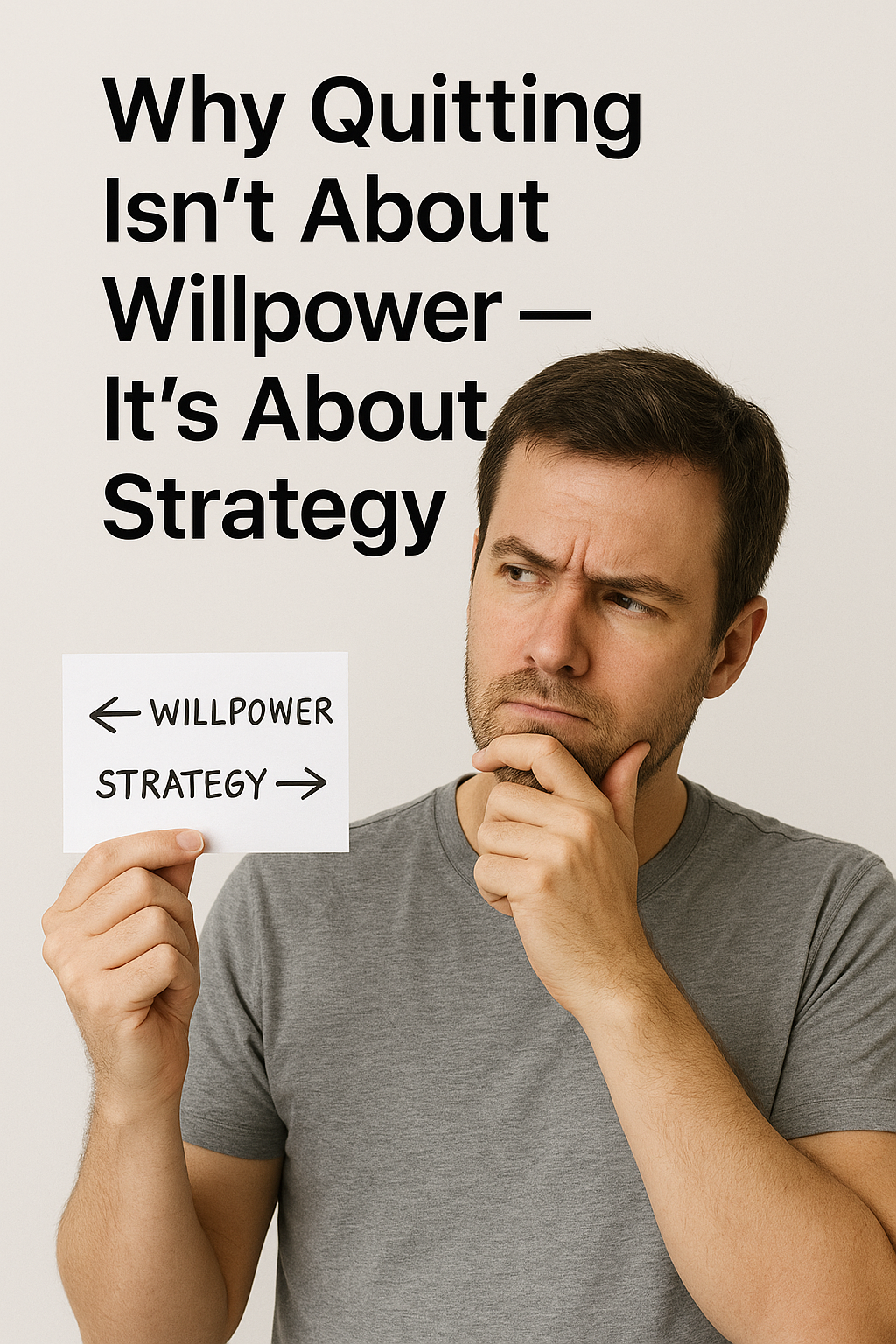People love to say that quitting smoking is all about willpower — like if you just “want it enough,” you’ll stop. But if that were true, millions wouldn’t struggle to quit every year. The truth is simple: quitting isn’t a test of strength. It’s a test of strategy.
1. Willpower Fades — Strategy Doesn’t
Willpower is like a battery. It drains the more you use it. You might power through the first few days with pure determination, but when stress hits or life gets chaotic, that energy runs out. Strategy, on the other hand, doesn’t depend on emotion — it builds structure.
Example: Having a plan for when cravings hit (like chewing gum or taking a walk) means you don’t have to “fight” every urge — you just follow your system.
2. Identify Your Triggers Before They Hit
Most relapses don’t happen randomly — they follow patterns. Morning coffee, breaks at work, driving, stress, or even boredom can be triggers. Knowing them ahead of time lets you plan around them instead of being blindsided.
- Change your morning drink for a few weeks (coffee → tea or juice).
- Replace the “smoke break” with a quick walk or text check-in.
- Keep sugar-free gum, mints, or a vape nearby for emergencies.
Pro tip: Track your cravings in a note app. Patterns appear fast when you look back after a few days.
3. Redefine “Success”
Quitting doesn’t have to mean going cold turkey overnight. Success can be tapering down gradually, switching to vaping, or cutting your daily count in half. Every step that moves you away from dependence counts as progress.
Success isn’t the absence of cigarettes — it’s the presence of control.
4. Build a Support System
Going at it alone makes relapse easier. Whether it’s a friend, family member, or online group, having someone who understands the struggle helps you stay accountable. Even a quick message like “I made it 3 days!” can reinforce your motivation.
If you can, connect with others who are quitting too. Shared milestones feel bigger when celebrated together.
5. Make Your Environment Work for You
Don’t rely on discipline to resist temptation — remove it. Clean your space, toss ashtrays, and wash away the smell of smoke from clothes and furniture. A fresh environment helps your brain disconnect from old associations.
- Keep healthy snacks and water visible.
- Hide or dispose of lighters and cigarette packs.
- Set reminders or notes that reinforce your “why.”
6. Focus on Replacement, Not Deprivation
Your brain hates loss. If quitting feels like losing something, it resists. But if it feels like replacing something, it cooperates. Replace the hand-to-mouth motion with a vape, a pen, or even breathing exercises. Replace the “break” moment with music, a short video, or stretching.
You’re not depriving yourself — you’re rewiring yourself.
7. Have a Relapse Plan
Slip-ups don’t mean failure — they’re feedback. What triggered it? What can you change next time? Having a relapse plan keeps guilt from turning into a full-blown return to smoking.
Remember: Every restart is a restart closer to success — not back to zero.
Final Thoughts
Quitting smoking isn’t a battle of willpower — it’s a process of strategy. The people who succeed don’t have stronger minds; they have smarter systems. Build your plan, prepare for your weak moments, and let strategy do the heavy lifting when willpower fades.
Discipline gets you started. Systems get you free.







Please log in to leave a comment.